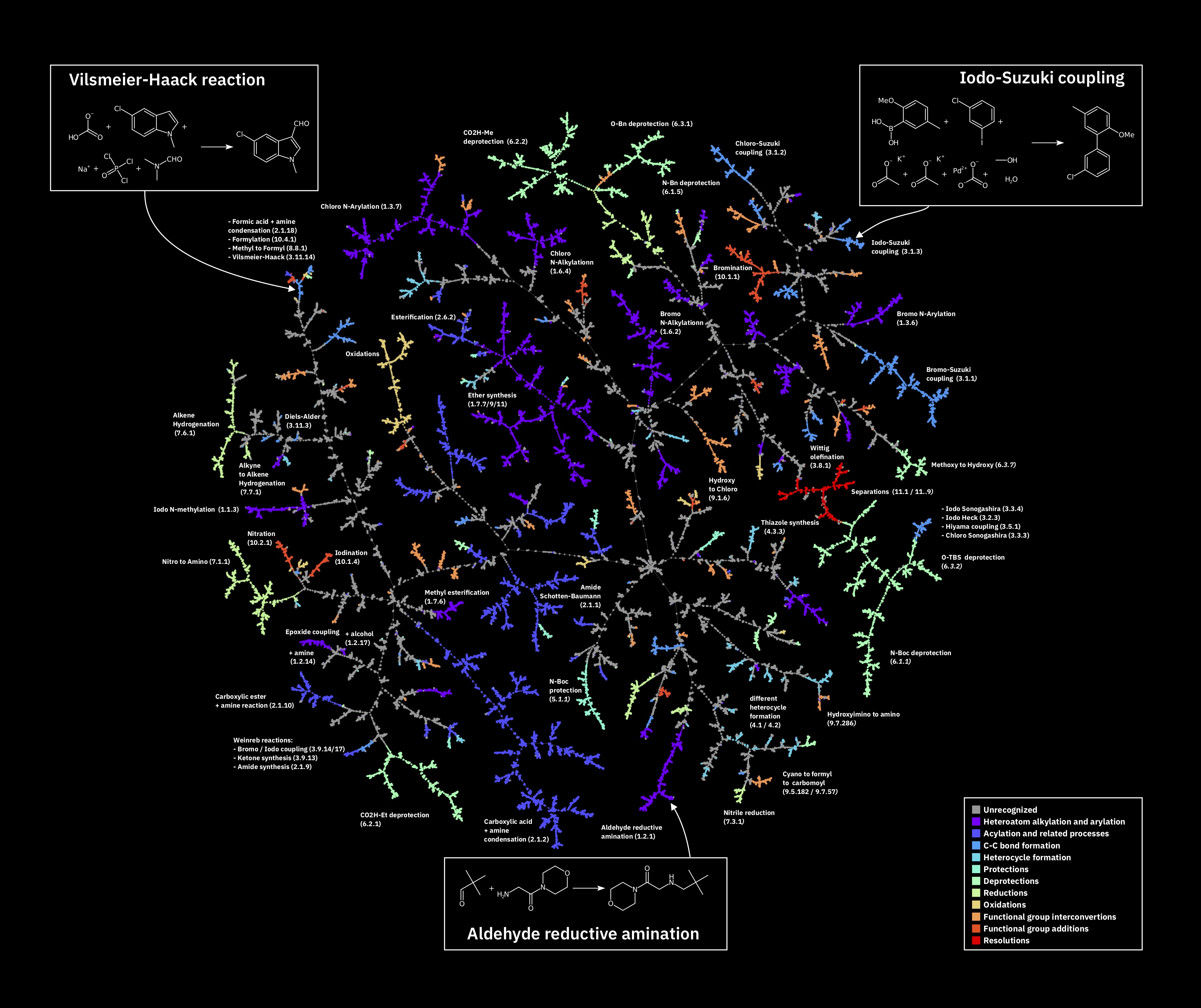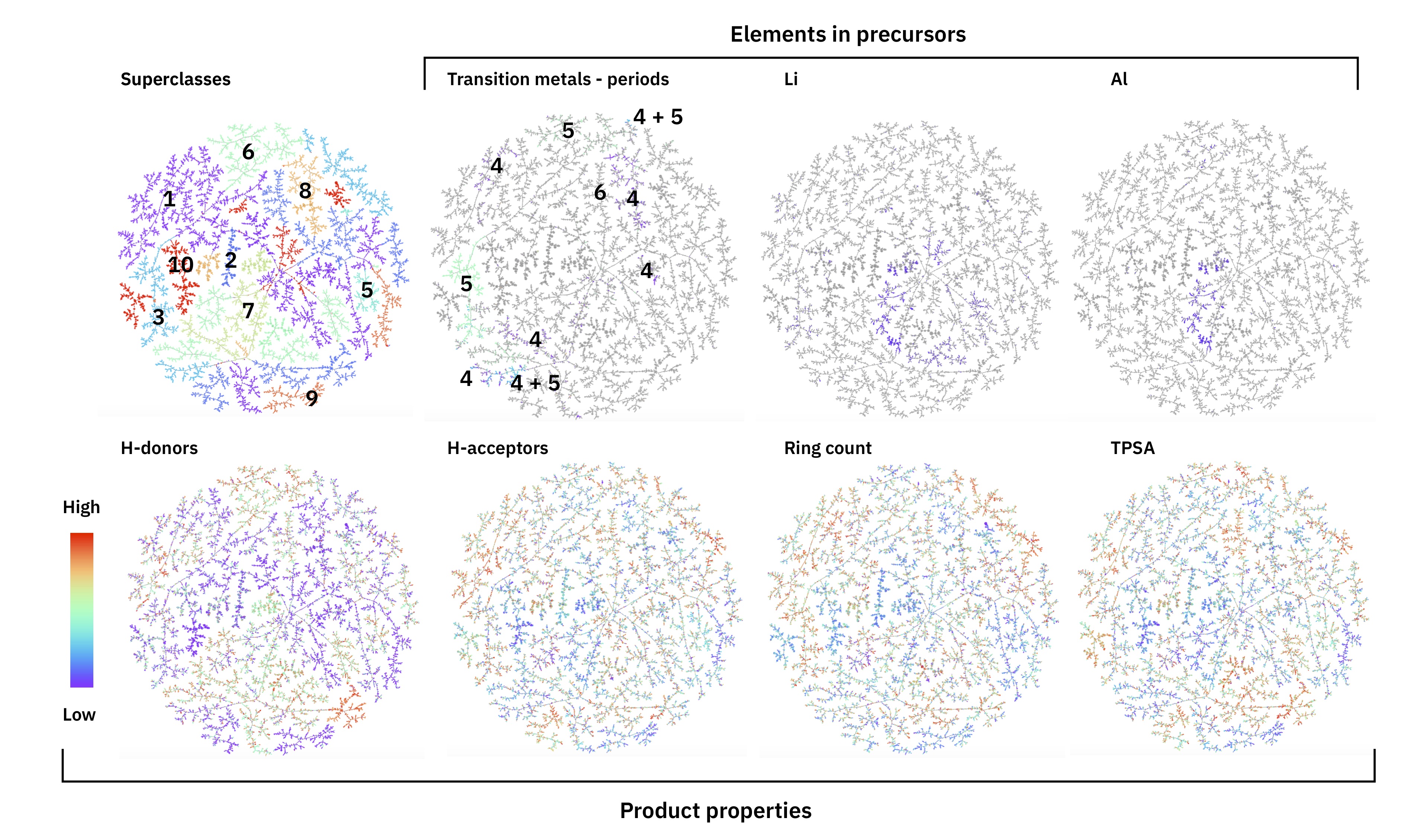This library generates chemical reaction fingerprints from reaction SMILES
For all installations, we recommend using conda to get the necessary rdkit and tmap dependencies:
conda create -n rxnfp python=3.6 -y
conda activate rxnfp
conda install -c rdkit rdkit=2020.03.3 -y
conda install -c tmap tmap -y
pip install rxnfpconda create -n rxnfp python=3.6 -y
conda activate rxnfp
conda install -c rdkit rdkit=2020.03.3 -y
conda install -c tmap tmap -y
git clone git@github.com:rxn4chemistry/rxnfp.git
cd rxnfp
pip install -e .Compute a fingerprint from a reaction SMILES
from rxnfp.transformer_fingerprints import (
RXNBERTFingerprintGenerator, get_default_model_and_tokenizer, generate_fingerprints
)
model, tokenizer = get_default_model_and_tokenizer()
rxnfp_generator = RXNBERTFingerprintGenerator(model, tokenizer)
example_rxn = "Nc1cccc2cnccc12.O=C(O)c1cc([N+](=O)[O-])c(Sc2c(Cl)cncc2Cl)s1>>O=C(Nc1cccc2cnccc12)c1cc([N+](=O)[O-])c(Sc2c(Cl)cncc2Cl)s1"
fp = rxnfp_generator.convert(example_rxn)
print(len(fp))
print(fp[:5])
256
[-2.0174953937530518, 1.7602033615112305, -1.3323537111282349, -1.1095019578933716, 1.2254549264907837]
Or for a list of reactions:
rxns = [example_rxn, example_rxn]
fps = rxnfp_generator.convert_batch(rxns)
print(len(fps), len(fps[0]))
2 256
The fingerprints can be used to map the space of chemical reactions:

Figure: Annotated Atlas of the Pistachio test set generated with TMAP.
In the notebooks, we show how to generate an interative reaction atlas for the Schneider 50k set. The end result is similar to this interactive Reaction Atlas.
Where you will find different reaction properties highlighted in the different layers:
We introduce a new data set for chemical reaction classification called USPTO 1k TPL. USPTO 1k TPL is derived from the USPTO data base by Lowe. It consists of 445k reactions divided into 1000 template labels. The data set was randomly split into train/valid 90% and test 10%. The labels were obtained by atom-mapping the USPTO data set with RXNMapper, then applying the template extraction workflow by Thakkar et al. and finally, selecting reactions belonging to the 1000 most frequent template hashes. Those template hashes were taken as class labels. Similarly to the Pistachio data set, USPTO 1k TPL is strongly imbalanced.
The data set can be downloaded from: MappingChemicalReactions.
Our work was first presented in the NeurIPS 2019 workshop for Machine Learning and the Physical Sciences. And has been published after multiple updates in 2021 in Nature Machine Intelligence (free access link).
@article{schwaller2021mapping,
title={Mapping the space of chemical reactions using attention-based neural networks},
author={Schwaller, Philippe and Probst, Daniel and Vaucher, Alain C and Nair, Vishnu H and Kreutter, David and Laino, Teodoro and Reymond, Jean-Louis},
journal={Nature Machine Intelligence},
volume={3},
number={2},
pages={144--152},
year={2021},
publisher={Nature Publishing Group}
}
RXNFP has been developed in a collaboration between IBM Research Europe and the Reymond group at the University of Bern. The classification models are used on the RXN for Chemistry platform.
